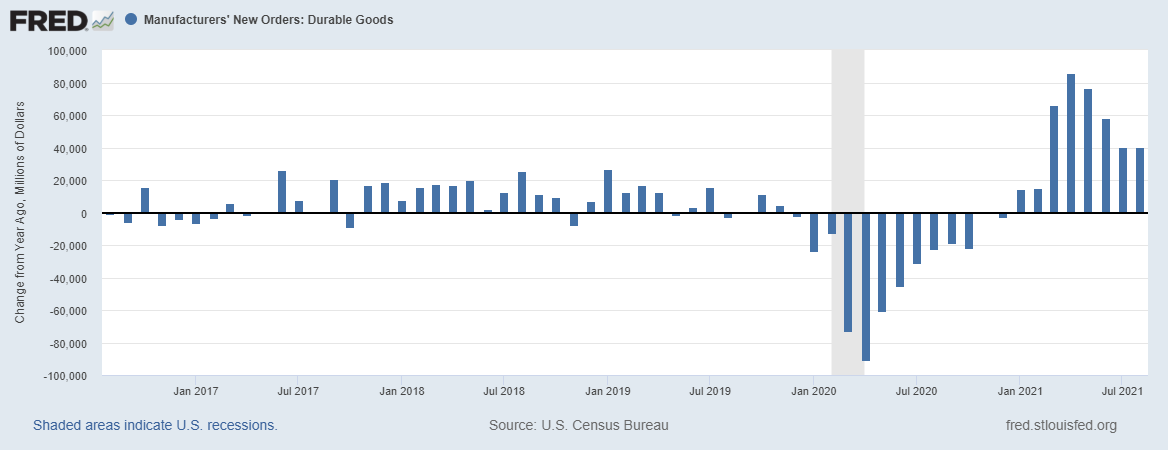I’ve often written about the importance of the monthly durable goods report. It’s among the most important economic news releases every month.
That’s because it’s one of the few forward-looking economic reports. Formally known as the Monthly Report from the Census Bureau on new orders for durable goods, the data offers insights into what factories will be producing in the future. It’s also one of the few reports that provides insights on consumers and businesses.
Durable goods are products designed to last at least three years. They include kitchen appliances, computers and industrial machinery.
New orders for durable goods are one of the few indicators that combines consumer and business confidence.
Consumers make big purchases when they’re optimistic about the future. That’s especially true for financed purchases. Financing shows confidence in the ability to make payments.
Pessimistic consumers delay purchases. Think of your own household. If you’re worried about losing your job, you probably avoid new debt. This idea applies to the larger economy. Millions of households behave that way.
These same factors affect business decisions as well. Businesses make big purchases when managers are optimistic and defer decisions when they are pessimistic.
Durable Goods Orders Point to a Bright Future
In August, according to The Wall Street Journal: “New orders for products meant to last at least three years increased 1.8% … Economists surveyed by The Wall Street Journal had forecast a 0.6% increase.”
The chart below shows that new orders are now telling us the economy continues growing at a pace well above its pre-pandemic trend.
Durable Goods Orders Are Way Up

Source: Federal Reserve.
The chart shows the monthly change in new orders on the manufacturer’s side. It’s at a level considered unimaginable a few years ago. In just eight months, new orders have completely recovered from the economic shutdown and are now at all-time highs.
But durable goods are still bullish for the stock market. If orders are greater than they were six months ago, the S&P 500 generally moves higher. Avoiding the stock market when new orders are lower than they were six months ago beats a buy-and-hold strategy.
For now, durable goods orders are strong and increasingly bullish for stocks.
While I didn’t exactly design the internet, I can take full credit for this.
I’ve created a first-of-its-kind innovation in the financial markets. It allows everyday traders to get ahead making one simple trade per week.
Click here to see how it works.
Michael Carr is a Chartered Market Technician for Banyan Hill Publishing and the Editor of One Trade, Peak Velocity Trader and Precision Profits. He teaches technical analysis and quantitative technical analysis at the New York Institute of Finance. Mr. Carr is also the former editor of the CMT Association newsletter, Technically Speaking. Follow him on Twitter @MichaelCarrGuru.





